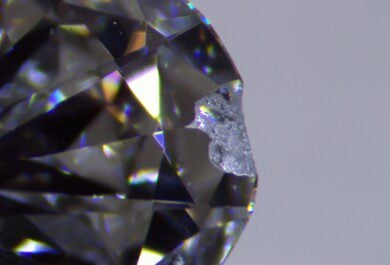The 4Cs started as 3Cs
Many people, professionals included, don’t realize the 4Cs of diamonds started as the 3Cs of diamonds. Many are also unaware of how this origin story continues to impact diamond education and valuation today.
What were the 3Cs of diamonds?
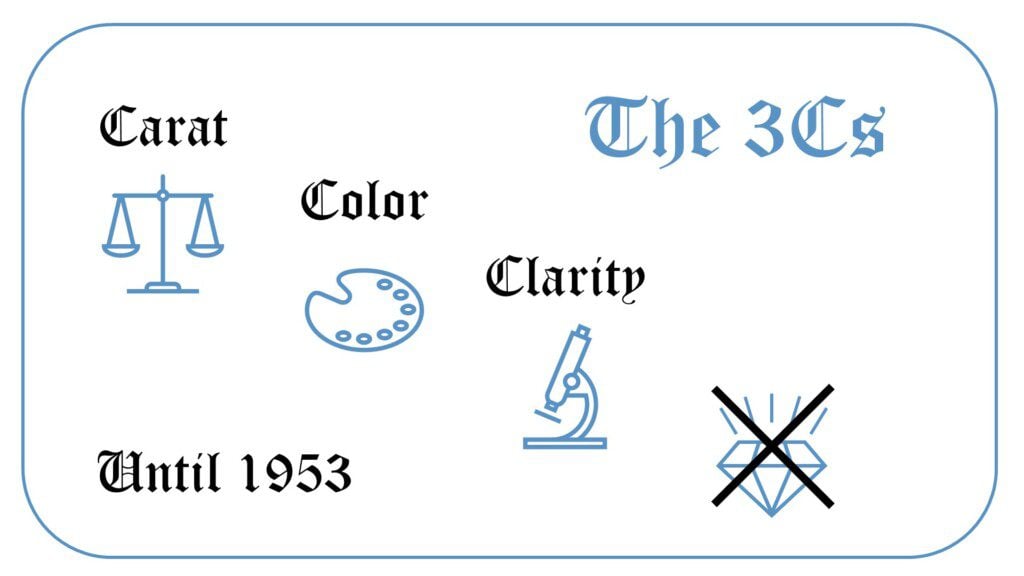
Diamond Carat Weight
Diamond Color
Diamond Clarity
If you know your diamond 4Cs, you’ll recognize that “cut” is missing.
Why wasn’t cut included?
To understand this, let’s follow the money. Long before the 4Cs of diamonds was ever conceived, the marketing of diamonds started with DeBeers Consolidated Mines, a company that held a monopoly on the world’s supply of rough diamonds for almost 100 years.
PriceScope Pointer: Take a cut quality shortcut. See our Descriptive Proportions Chart to know whether a round diamond shows more brightness, more fire, or a balance of both. Our longstanding Member Recommended Proportions are listed there too.
Back then, just as now, a mining company had no reason to care about cut. A mining company extracts and sells rough, natural diamond crystals pulled from the earth. Those rough crystals get classified, sorted into parcels and – most importantly – priced for sale based on raw carat weight, color and clarity.
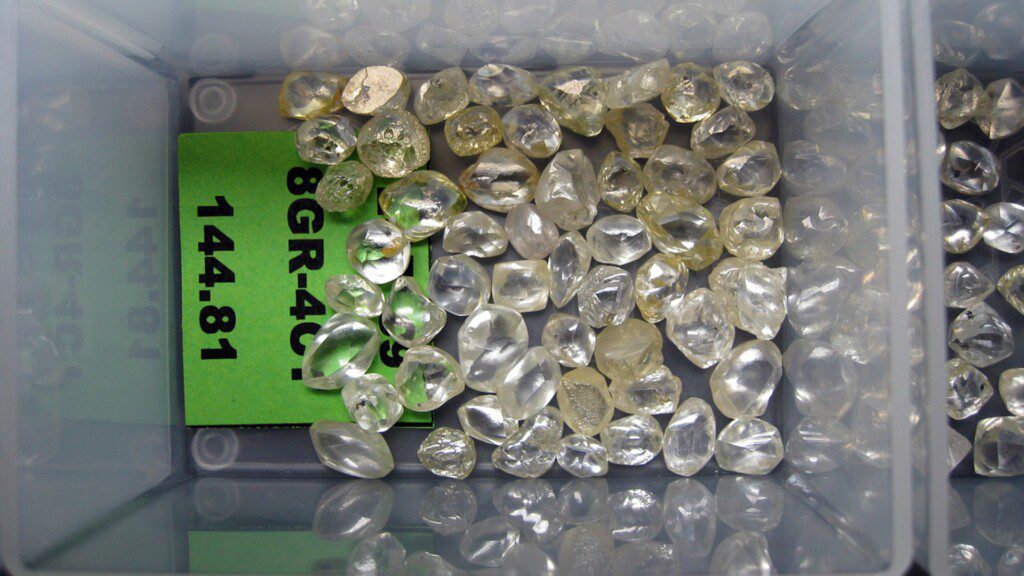
Even today, DeBeers and other miners sell rough diamonds in parcels like the one pictured above, based on raw carat weight, color, and clarity: the old 3Cs of diamonds. Even today, whatever client bids the highest, based on those old 3Cs, gets to purchase the parcel. Only then, after the miner has sold the rough diamonds, does cut become relevant.
Throughout the 1900s, DeBeers taught color, clarity and carat weight evaluation to their sorters and traders. Their first marketing efforts romanced the “3Cs of diamonds.”
It wasn’t until the 1950s that cut was recognized and included by GIA as the 4th C of diamonds.
The most important C: Some of our vetted vendors offer special collections of diamonds selected for superior Cut Quality. Check out Astor by Blue Nile™, Whiteflash A CUT ABOVE® and James Allen True Hearts™. branded diamonds.
GIA creates the 4Cs of Diamonds
In 1953, the Gemological Institute of America (GIA) formalized their International Diamond Grading System and the 4Cs of diamonds were officially established.
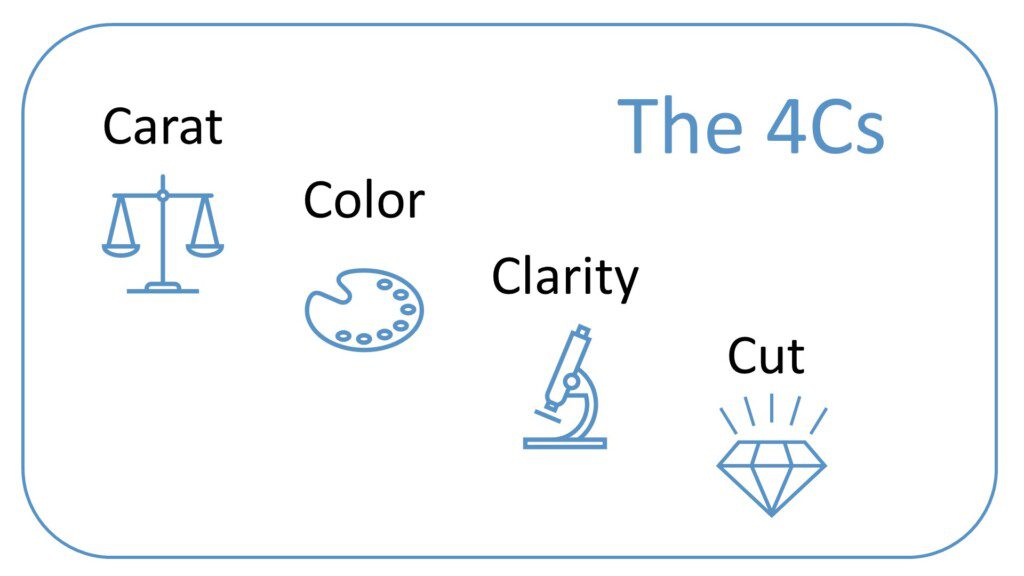
The 4Cs of Diamonds
Diamond Carat Weight
Diamond Color
Diamond Clarity
Diamond Cut
In 1955, the GIA published their first diamond grading reports, reporting carat weight (which was already standardized) and grading color and clarity on established scales a man named Robert Shipley had been evolving for 20 years. The GIA diamond 4Cs grading scale continued to be used internationally, among all diamond grading laboratories. Shipley is widely considered to be the father of the 4Cs of diamonds.

For 50 years, Cut meant Shape
While the GIA established cut as one of the formal 4Cs of diamonds, they only used that term to describe a diamond’s shape until 2006. For this reason, shape and cut are often used interchangeably, even today, although it’s no longer true. Some professionals still don’t differentiate.
Diamond Shape
The diamond shape refers to the outline – quite literally, the shape you see when viewing the diamond from above (for example, a heart, a pear etc.).

Diamond Cut
The cut of a diamond, sometimes referred to as cut quality, is an assessment of the diamond’s proportions, angles, polish, and facet symmetry.
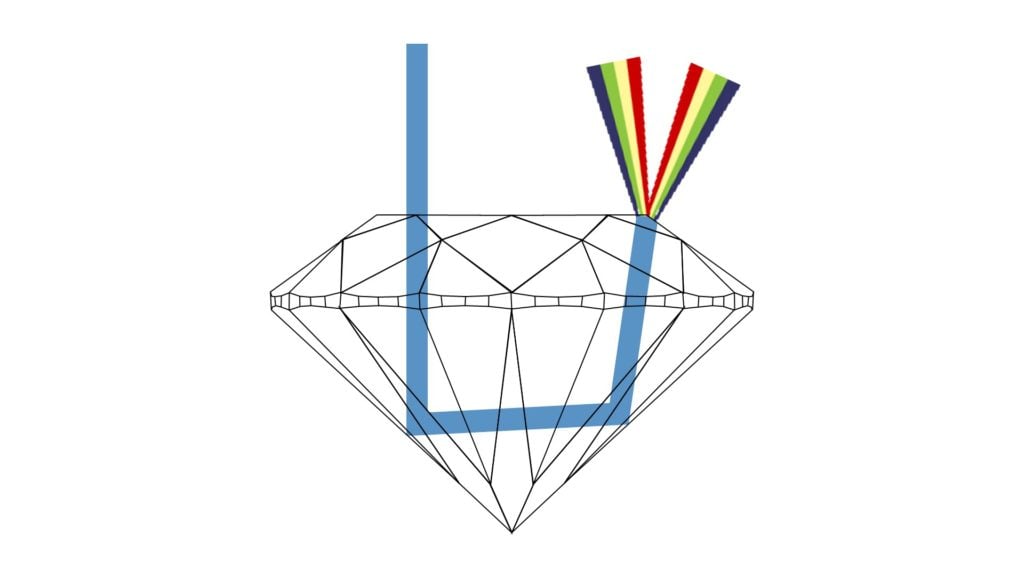
Carat Weight for the Win
Why is carat weight the most important of the diamond 4Cs from a value-perspective?
Imagine you are a diamond cutter in the early 1900s. You bid high and purchase a rough diamond parcel from DeBeers. Now, you want to maximize your profits. Remember, you bought the parcel based on 3Cs; you can’t alter a diamond’s natural color or clarity (excluding treatments and enhancements, which are beneath you in this example), but you can plan to shape and polish it with the least possible waste of carat weight.
If you use wide cutting angles, which will finish the diamond at 1.10 carats instead of 1.00 carat, you’ll make 10% more profit. Since we are in the early 1900s cut is not yet recognized as one of the 4Cs of diamonds. This means you have the freedom to prioritize carat weight over everything else.
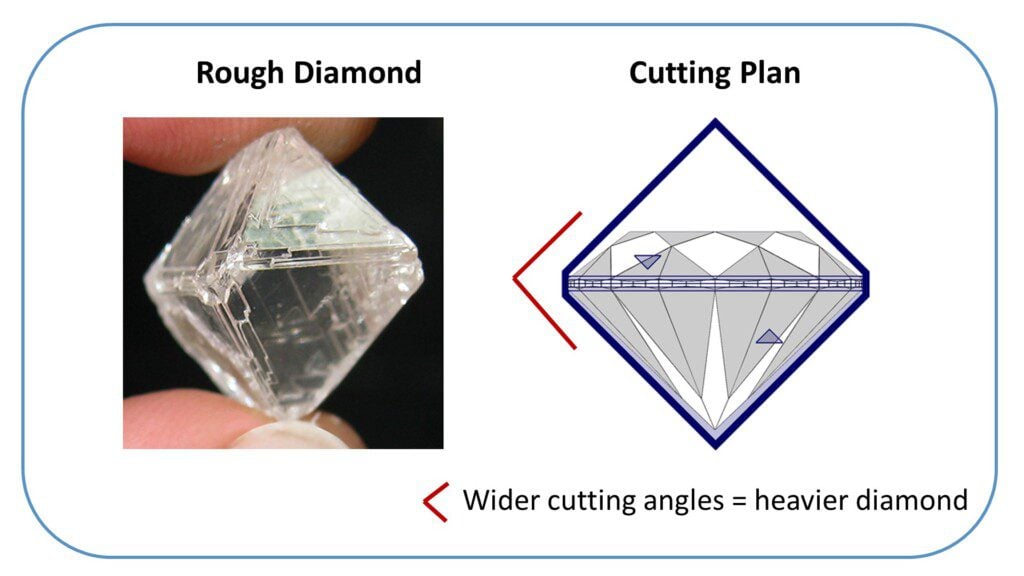
Nothing Has Changed
Even today, when everyone agrees that the 4Cs of diamonds includes cut, DeBeers, Alrosa and the other miners continue selling their rough crystals based on only the 3Cs. This forces diamond cutters to maximize profits according to the 3Cs, which means they must still prioritize carat weight.
Think About That…
Even with the 4Cs recognized, cut quality – which has the most influence on a diamond’s brightness, fire, sparkle, and contrast – continues to be a non-factor in the initial purchase from miner to producer. That means competing producers continue to prioritize carat weight over all other Cs when submitting bids, including cut quality.
Color Confusion
In the early 1900s, the 4Cs of diamonds did not exist. Even the 3Cs established by DeBeers were subject to different terms and definitions by various traders. Jewelers knew color, clarity and carat weight were value factors, but the language had not been standardized. Early color descriptors included regional terms like “Finest White,” “Jager”, and “River” for diamonds which would be included in today’s D-E-F colorless range, and “Silver Cape” and “Cape” for diamonds which would land in today’s K-L-M faint yellow range.
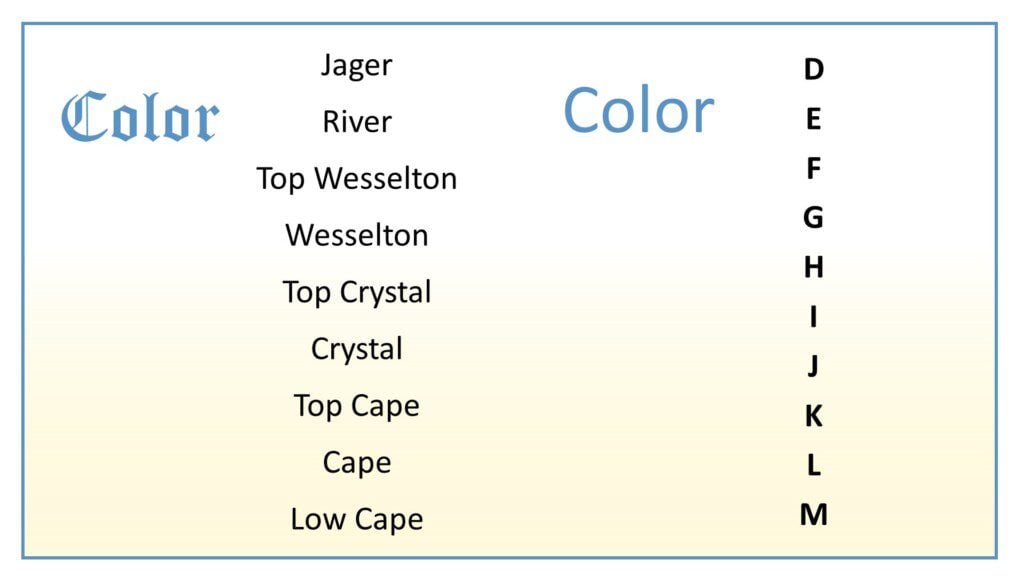
While these terms are more romantic than letters like D or K, the lack of defined standards made them subject to abuse. As diamonds gained popularity among America’s East Coast elite during the Roaring Twenties, sellers tried to outdo one another with marketing which was increasingly confusing. Old World color terms were replaced by invented categories. When one jeweler claimed his diamonds were “A” color, another down the block started using “AA” color, a third used “AAA” color, and so-on.
The reason Shipley chose the letter D as the highest diamond color grade when he established the GIA’s grading system was to eradicate the use of the many As, AAs, and A1s.
The Diamond 4Cs are actually 5Cs
Today, no diamond of worth is traded without being accompanied by a vital 5th C: a diamond certificate (or grading report).
This document, issued by an independent diamond grading laboratory, is an assessment of the fundamental diamond 4Cs: Carat weight, measurements in millimeters and judgments involving color, clarity, and cut quality.
Many grading reports include a drawing of the diamond with its physical proportions and a plotted clarity diagram of key characteristics. Some grading laboratories publish supplemental standardized photos and videos online.
PriceScope’s Diamond Certification Page
If you’re unfamiliar with this all-important 5th C, visit our Diamond Certification page.
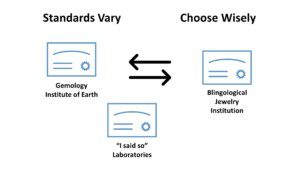
Top-tier laboratories use strict, industry-accepted international standards for diamond color and clarity grading, including calibrated master-stone sets between locations to ensure consistency.
If you have shopped for jewelry in mall-based chain or department stores, you may have been shown grading reports mass-produced for multiple pieces. Such Department Store reports should not be confused with loose diamond grading reports. They are mass-produced for multiple pieces and are not nearly as specific, strict, or expensive as stand-alone diamond certification for loose diamonds issued by top grading laboratories.
Diamond 4Cs in Detail
Choose your path
If you’re short on time, discover our “secret recipe:” three foolproof steps to ensure you receive the largest, brightest, most sparkling diamond online for your budget: PriceScope Diamond Buying Guide.
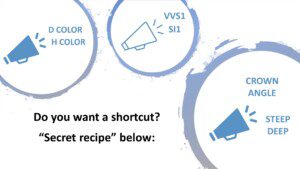
If you’re motivated to elevate your knowledge about diamonds you’re in the right place. Start by reading about each of the 4Cs of diamonds:
Learn how to reject diamonds that look smaller than they should – by maximizing both physical diameter and “edge to edge” brightness.
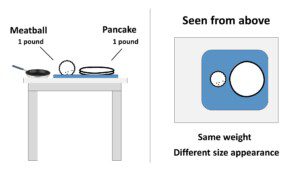
Supercharge your knowledge by spending 15 minutes on this page: potentially the best investment you’ll ever make in your diamond research.
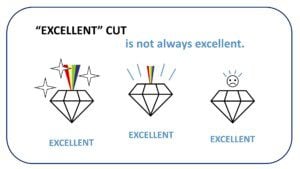
Judge color better by understanding the color grading process (surprise!) and learning what you should wear when diamond shopping.
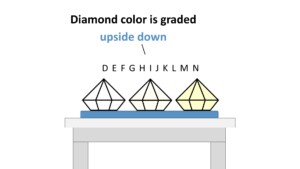
Stretch your budget by learning what grades are always clean to the naked eye – and memorize PriceScope’s “eye clean” definition.
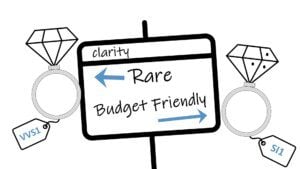
Get fast answers to any question: Ask our community of unbiased independent helpers.
Ready to find your diamond?
























